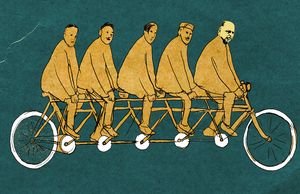Mulayam Singh Yadav had an emotional decision to make. Following an eviction notice, he had to surrender a government bungalow in Lucknow which was allotted to the Lohia Trust when he was chief minister. Perhaps the last of the national level politicians groomed by Ram Manohar Lohia in the 1960s, Mulayam, as chairman of the trust, found the trust was not very effective as two rival factions of the Yadav family did not see eye to eye on carrying forward the legacy of the most radical socialist leader in the country.
Lohia, a firebrand who advocated the political advancement of the intermediate castes and classes, and women, died at age 57 in 1967—the year in which Mulayam entered the Uttar Pradesh assembly as a new MLA. In the nature of socialist politics from the 1940s, the socialists have united and divided over the last half century, with Lohiaite ideology of political uplift of Other Backward Classes being adopted across the political spectrum from the Congress to the BJP. For both national parties, B.R. Ambedkar and Lohia are the torchbearers of social revolution, even though no Ambedkarite or Lohiaite has become prime minister so far.
The year Mulayam became an MLA was also the year the socialists made their presence known across the country from the Gangetic Plain to the Western Ghats. As the Congress weakened during 1962-1967, Lohia and other socialists billed themselves as the alternative to the grand old party. But they had to wait till 1977 to share power with the Congress(O), the Jana Sangh and the Congress for Democracy in New Delhi as well as in the northern states. The seeds of OBC reservation were sown then, and 13 years later, a former Congressman as prime minister, V.P. Singh, accepted the reservations. Three years later, a Congress prime minister, P.V. Narasimha Rao, goaded by Sitaram Kesari, the welfare minister representing OBCs, issued the first appointment letter to an OBC candidate selected under the new quota. Leaders like Lalu Prasad, Nitish Kumar, S. Bangarappa, Siddaramaiah and Mulayam himself became chief ministers by asserting backward identity.
Narendra Modi has asserted his own origins from the backward classes in the election campaign, narrating how it is not well received by the elites of Lutyens Delhi. Mulayam, a practical politician, was egged on by his close political associate Jnaneshwar Mishra, the socialist intellectual called “chote Lohia (junior Lohia)”. While studying in Allahabad University, Mishra had come under the influence of Lohia and it was he who championed Lohia’s philosophy of social inclusion, primacy of Indian languages, bigger role for women and land reforms. A long-term parliamentarian, Mishra headed Lohia ke Log (Lohia’s People)—a chat house of like-minded political and social thinkers—till his death.
Interestingly, Lohia was a bitter critic of dynasty politics, while his most ardent champion, Mulayam, deliberately chose his family over the Lohia people, as seen by the dominance of the clan even in the Lohia Trust. Lohiaite philosophy does not just need new premises, but an ideological and idealistic revival, too.
sachi@theweek.in


